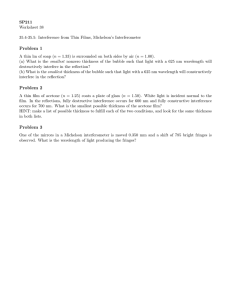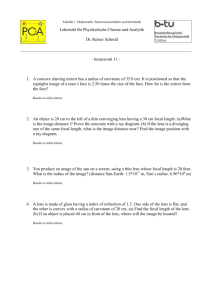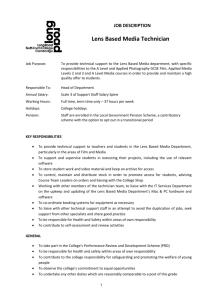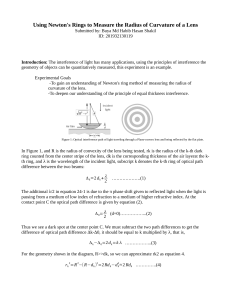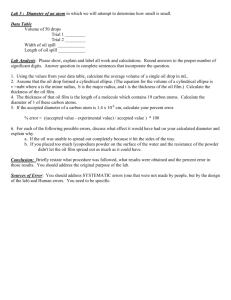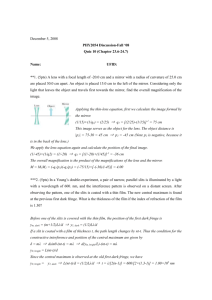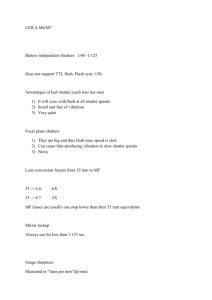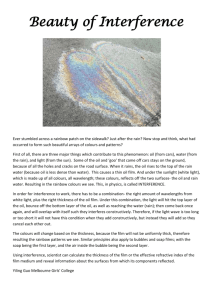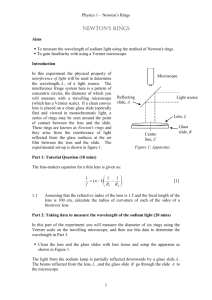Optics Homework: Thin Film Interference & Newton's Rings
advertisement
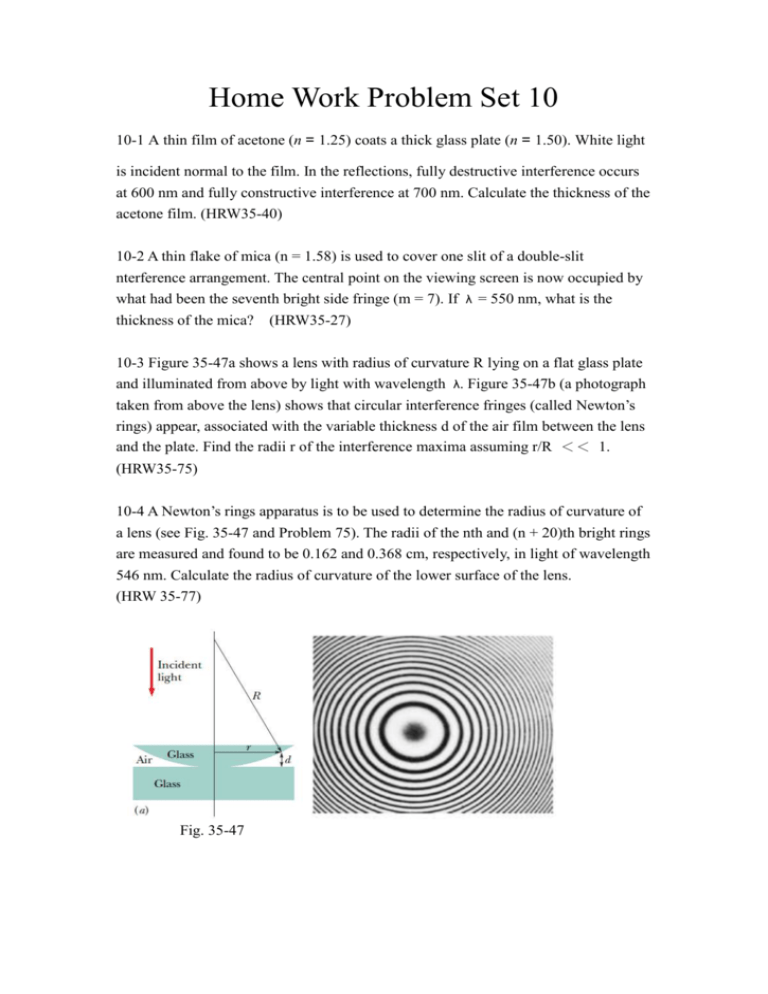
Home Work Problem Set 10 10-1 A thin film of acetone (n = 1.25) coats a thick glass plate (n = 1.50). White light is incident normal to the film. In the reflections, fully destructive interference occurs at 600 nm and fully constructive interference at 700 nm. Calculate the thickness of the acetone film. (HRW35-40) 10-2 A thin flake of mica (n = 1.58) is used to cover one slit of a double-slit nterference arrangement. The central point on the viewing screen is now occupied by what had been the seventh bright side fringe (m = 7). If λ = 550 nm, what is the thickness of the mica? (HRW35-27) 10-3 Figure 35-47a shows a lens with radius of curvature R lying on a flat glass plate and illuminated from above by light with wavelength λ. Figure 35-47b (a photograph taken from above the lens) shows that circular interference fringes (called Newton’s rings) appear, associated with the variable thickness d of the air film between the lens and the plate. Find the radii r of the interference maxima assuming r/R << 1. (HRW35-75) 10-4 A Newton’s rings apparatus is to be used to determine the radius of curvature of a lens (see Fig. 35-47 and Problem 75). The radii of the nth and (n + 20)th bright rings are measured and found to be 0.162 and 0.368 cm, respectively, in light of wavelength 546 nm. Calculate the radius of curvature of the lower surface of the lens. (HRW 35-77) Fig. 35-47
